I'm creating a car simulation using SFML.
As a matter of organization and logic, I created a single class "car", which also inherits sf::RectangleShape, and within this class there are other SFML objects, among them a Texture and a method to setup it.
I want to have multiple cars, so I created a vector of class "car".
In this example, I left only 2 cars with the images:
"car-red.png" and "car-black.png".

Here is an extract from the logic I'm using (I did a test program to make it easier to understand):
#include <iostream>
#include <vector>
#include <SFML/Graphics.hpp>
#define debug(x) std::cout << #x << "=" << x << std::endl;
using namespace std;
class car : public sf::RectangleShape {
public:
string s;
sf::Texture tex;
sf::Sprite img;
void imgInit(string imgFile) {
tex.loadFromFile(imgFile);
img.setTexture(tex);
s = imgFile;
}
};
int main()
{
vector<car> vecRet;
car objRet;
objRet.imgInit("car-red.png");
objRet.setSize(sf::Vector2f(150, 70));
objRet.setFillColor(sf::Color::Yellow);
vecRet.push_back(objRet);
objRet.imgInit("car-black.png");
objRet.setPosition(sf::Vector2f(300, 300));
objRet.img.setPosition(objRet.getPosition());
vecRet.push_back(objRet);
debug(vecRet[0].s);
debug(vecRet[1].s);
debug(vecRet[0].img.getTexture());
debug(vecRet[1].img.getTexture());
sf::RenderWindow window(sf::VideoMode(500,500), "Window", sf::Style::Close);
window.setFramerateLimit(120);
while (window.isOpen())
{
for (sf::Event event; window.pollEvent(event);) {
if (event.type == sf::Event::Closed)
window.close();
}
window.clear();
window.draw(vecRet[0]);
window.draw(vecRet[1]);
window.draw(vecRet[0].img);
window.draw(vecRet[1].img);
window.display();
}
return EXIT_SUCCESS;
}
There are two problems I can not solve:
1) Even doing push_back of the two cars, only the last image prevails.
Apparently, push_back refers to a single RAM address for the image.
Then the result looks like this:

That is, the second image (car-black.png) is probably overlapping the address of the first image.
The curious thing is that this only happens with the Texture class. In the example, the program debug a string within the class and in this case there is no overlap:
vecRet[0].s=car-red.png
vecRet[1].s=car-black.png
However the Texture objects within the class vector are pointing to the same memory address:
vecRet[0].img.getTexture()=000000C57A5FF250
vecRet[1].img.getTexture()=000000C57A5FF250
How to solve this?
2) The second problem is that, for each vecRet.push_back(objRet), the following errors appear in the console:
An internal OpenGL call failed in Texture.cpp(98).
Expression:
glFlush()
Error description:
GL_INVALID_OPERATION
The specified operation is not allowed in the current state.
What is this?